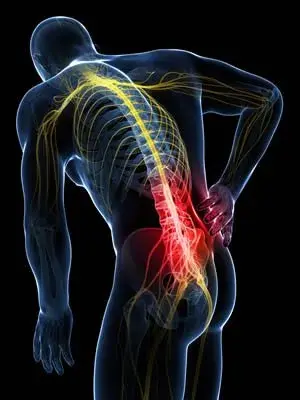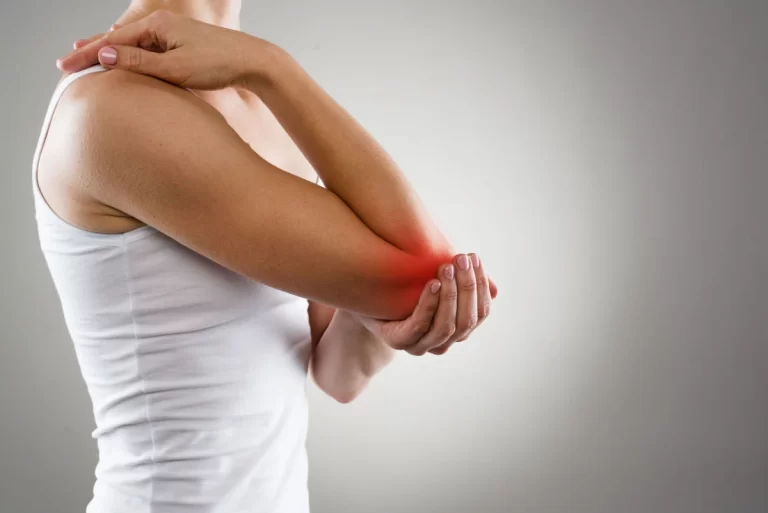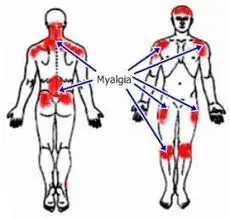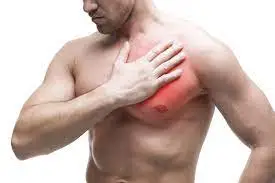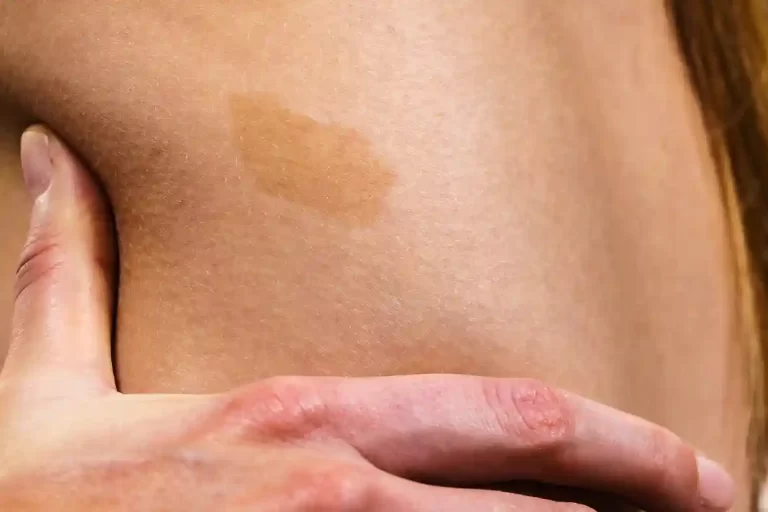Hives (Urticaria)
Introduction
Hives, which are a skin rash that can be very itchy, often occur due to an allergic reaction to food or something you have come into contact with. Hives can be acute, resolving quickly, or chronic, persisting for a long time. Therapies may consist of steroids or antihistamines.
Usually, hives manifest as an allergic reaction to something in your surroundings or to a food item you consumed. However, they can occasionally occur due to an underlying health problem.
Hives (urticaria) are raised, itchy blisters appearing on the skin. On lighter skin, they are typically red, pink, or flesh-toned; on brown or black skin, they may be flesh-colored or vary slightly in lightness or darkness compared to your skin tone. Sometimes they burn or irritate. Allergic reactions to food or medication, as well as responses to environmental irritants, are the primary causes of hives in most instances.
Often, hives represent an acute (temporary) issue that can be eased with allergy medications. Most rashes resolve without intervention. Nevertheless, chronic cases and hives that occur alongside a severe allergic reaction represent a more significant medical condition.
What are hives?
Raised red bumps (welts) or patches on the skin are known as hives. They are a form of surface swelling on your skin that occurs during an allergic reaction in your body. When your immune system encounters an allergic reactions occur. Allergens are proteins that, while safe for most individuals, trigger allergic reactions in those who are sensitive.
Hives are often accompanied by intense itching, but you may also experience a burning or Itching sensation. They can vary in size from that of a fingertip to that of a dinner plate. Urticaria is the medical term for hives.
At times, the welts caused by hives merge to create larger regions known as plaques. Although hives can remain visible for several days or longer, they generally fade within 24 hours.
Hives are a dermatological response that leads to the sudden emergence of bumps, raised areas, or a combination of the two. These bumps and patches are often accompanied by intense itching. The majority of hive cases are transient and resolve on their own without treatment. A board-certified dermatologist can assist in preventing flare-ups when hives persist.
Sometimes, hives might be contagious, as some individuals develop them when contracting a contagious illness such as strep throat, COVID-19, or the common cold. This is what’s going on. Initially, the individual contracts an infectious illness. Subsequently, in response to the infection, their immune system produces histamine. Hives are caused by histamine.
How do Hives appear?
The skin develops welts, which are the most affecting symptom of hives. They can vary in shape and size, being small and round, ring-shaped, or large with an irregular shape. Hives are characterized by itchiness and usually manifest in clusters on the affected area of the body. They can increase in size, alter their shape, and distribute.
During the outbreak, hives can disappear. Single hives or blisters may persist for 30 minutes to a full day. When pressed, hives may appear white. At times, the hives can alter their shape or merge to form a bigger raised region.
Hives can appear in various areas of the body. If you experience a hives outbreak near your throat or on your tongue, or if you have difficulty breathing along with hives, visit your doctor.
Types of Hives
Acute urticaria is characterized by hives that are short-lived (under six weeks). Chronic urticaria is characterized by hives occurring at least twice a week for over six weeks.
The term chronic spontaneous urticaria refers to chronic hives with no identifiable cause. This condition was previously known as chronic idiopathic urticaria.
Another condition is known as physical urticaria, or inducible urticaria. These hives can appear when you are exposed to cold, heat, or sunlight. Some individuals respond to vibrations or pressure, as well as exercising or sweating. Physical hives typically manifest within an hour of exposure. Chronic cases can occur with this type of hives as well.
Hives can arise from an allergic reaction or may occur without a known cause.
Allergy-related reactions.
The primary causes of hives are allergy-related reactions. These can result from any allergen you may be sensitive to, including:
- Foods (such as nuts, milk, and eggs)
- Pet dander
- Pollen
- Dust mites
- Insect bites or stings
- Medications (primarily antibiotics, cancer drugs, or ibuprofen)
For mild allergy-induced hives, treatment usually involves long- or short-term allergy medications along with avoiding the trigger.
Anaphylaxis
One severe, possible, serious allergic reaction is anaphylaxis. It often presents with hives, along with breathing difficulties, nausea or vomiting, severe swelling, and dizziness.
Chronic hives
Chronic hives are persistent cases for which a specific cause is not always apparent. Known as chronic urticaria as well, this condition features recurring hives that can disturb your everyday life. Chronic cases may continue for weeks, several months, or even years.
If you have a blister that lasts longer than 6 weeks, you may suspect chronic hives. This type of hives is not life-threatening, but it can be uncomfortable and challenging to treat. Chronic hives can also indicate an underlying health issue, such as:
- An autoimmune disorder
- Celiac disease
- Lupus
- Type 1 diabetes
- Rheumatoid arthritis
- Thyroid disease
Dermatographias
This type of acute hives is regarded as mild. It is caused by excessive scratching or constant pressure on the skin. Dermatographia typically resolves itself within a short time without any treatment.
Temperature-induced hives
In some individuals who are sensitive to temperature fluctuations, such changes can occasionally trigger hives. Cold water or air exposure can trigger cold-induced hives, whereas body heat from physical activity can lead to exercise-induced hives. For some individuals, exposure to sunlight or tanning beds can trigger solar hives.
Infection-induced hives
Hives can result from both viral and bacterial infections. Common bacterial infections that can lead to hives include urinary tract infections and streptococcal throat infections. Hives are often triggered by viruses that lead to infectious mononucleosis (mono), hepatitis, and colds.
Causes of hives
Causes of acute hives
Acute hives are frequently caused by an allergy to substances you ingest (such as food, beverages, or drugs) or that come into contact with your skin. The skin contains immune cells known as mast cells. As these cells spring into action, they emit various substances, one of which is histamine. The formation of hives is caused by histamine.
There are many other possible causes for hives as well. Some of these factors are having an infection, experiencing stress, or having physical pressure on your skin. Healthcare providers often find it challenging to pinpoint the exact cause of your hives.
Causes of chronic hives
Chronic hives are generally not triggered by allergies, in contrast to acute hives. They can be triggered by bacterial or viral infections, or by other medical conditions such as lupus. Your provider might not identify a specific cause. In such instances, chronic hives are referred to as idiopathic or spontaneous.
While chronic hives persist for extended durations, they are typically not permanent. While they may cause pain, they do not pose a threat to life.
Symptoms
The appearance of hives varies according to the individual and the context. They can appear anywhere on your body. Acute hives can be indicated by the following symptoms:
- Swollen blisters or lumps on your skin. On the skin of a lighter color, the bumps may appear reddish.
- Hives lose their color (the center of the hive lightens when pressed).
- Skin that itches.
- Swelling beneath your skin that results in puffiness (angioedema).
- It can also manifest as painful swelling of the lips, eyes, and throat.
Symptoms of chronic hives
Chronic and acute hives can resemble each other in various ways: both can manifest as itchy, swollen, raised blisters that lighten at the center and under pressure. Nonetheless, chronic hives can:
- Change the sizes and shapes of shifts.
- Make a presence, disappear, and then return at least every few days for months or years.
- Occur together with heat, physical exertion, or strain.
Who faces the risk?
Individuals known to have allergies are at a greater risk of developing hives. If you are on medication or if you are exposed to allergens like food or pollen without your knowledge, you might also be at risk for developing hives. If you are already suffering from an infection or health issue, your susceptibility to hives may increase.
Diagnosis
By examining your skin, your healthcare provider can determine if you have hives and angioedema. While allergy tests can assist in pinpointing the cause of a reaction, this is mainly applicable to acute hives. Identifying the cause can assist you in steering clear of allergens and the accompanying hives. To diagnose hives, the following allergy tests are included:

- Skin tests: In this procedure, different allergens are tested on your skin by healthcare providers. If your skin becomes red or inflamed, this indicates an allergy to that substance. This kind of allergy test is known as a skin prick test or scratch test. Chronic hives usually don’t involve skin testing.
- Blood tests: A blood test looks for certain antibodies present in your blood. Your body produces antibodies to combat allergens. When your body produces an excess of antibodies, you may experience hives and swelling.
Treatment
To begin the treatment process, the first thing to do is confirm that you have hives. Usually, a doctor can identify hives through a physical examination, as your skin will display signs of the welts associated with hives. If your hives are suspected to be due to an allergy, a doctor might conduct blood tests or skin tests to determine their cause. For mild cases of hives not connected to allergies or other medical issues, prescription medication may not be necessary. In such cases, a doctor might recommend seeking temporary relief by:
- Using antihistamines like diphenhydramine (Benadryl) or cetirizine (Zyrtec), steering clear of further irritation to the area, staying away from hot water, as it can worsen the hives, having a cool or lukewarm bath with colloidal oatmeal or baking soda
- Anaphylaxis constitutes a medical emergency that requires prompt treatment from a doctor.
Usually, hives resolve on their own without treatment. Your healthcare provider may suggest medications and at-home care to help you feel better and reduce the likelihood of future hives. Treatments comprise:
- Allergy medications: Antihistamines are a type of medicine that prevents histamine from having an effect. They can be administered either orally (by swallowing a pill) or topically (applied to the affected skin). Allergic reactions can be alleviated or diminished in severity by antihistamines, which also alleviate hives-related itching.
- Certain antihistamines, like diphenhydramine (Benadryl®), act swiftly. Based on the severity of the hives, your healthcare provider might suggest daily allergy medications such as loratadine (Claritin®), fexofenadine (Allegra®), cetirizine (Zyrtec®), or levocetirizine (Xyzal®).
- Allergy shots: Your healthcare provider might talk about monthly injections of medications that prevent allergic reactions for chronic hives that are difficult to treat. Individuals who have serious allergies produce excessive amounts of IgE. These injections prevent your immune system from producing IgE.
At-home treatments

Although they are not the primary cause, several other variables may exacerbate symptoms. Some people have found the following advice useful, although there isn’t much evidence that it works for everyone:
- If wheals happen in areas of local pressure, such as beneath belts, tight-fitting shoes, etc., try to avoid wearing tight clothing.
- Since hives may tend to flare up in warmer weather, try to stay cool. Keep the bedroom cool at night, especially.
- Alcohol, hot baths, intense sunlight, and emotion might exacerbate symptoms for some people. Avoiding any of these could be beneficial if you believe they are exacerbating your symptoms.
If you believe a medication is exacerbating your symptoms, consult a physician, as a prescription switch may be necessary. Anti-inflammatory pain relievers, angiotensin-converting enzyme (ACE) inhibitors, and aspirin are a few medications that may be triggers.
Other treatments

A specialist may be recommended for someone with severe hives. Experts in allergies (called immunologists) or skin (called dermatologists) might be able to assist. Particularly, an immediate hospital stay would be necessary if angio-oedema or anaphylaxis happened simultaneously. This is done in order to promptly reverse the reaction, validate the diagnosis, and, if feasible, determine the reason. For instance, tests can verify whether a severe episode was caused by a suspected nut allergy.
- Other medicines, such as a pill called montelukast, which is often used for asthma, may be used occasionally. Since antihistamines frequently don’t help with delayed pressure urticaria, this might be very helpful.
- A more recent drug called omalizumab works against autoantibodies that the body’s immune system produces. Once a month, it must be administered by injection. According to certain research, this works well for certain forms of inducible urticaria. When no other medication has been effective for chronic spontaneous urticaria, the National Institute for Health and Care Excellence (NICE) has advised using it. A hospital consultant must administer it.
Although symptoms may improve with UV light treatment (phototherapy), this may only be the case for a few months.
Complications of Hives
Individuals experiencing a severe acute allergic reaction may face life-threatening swelling of the airways, including the throat and lungs. This condition is referred to as anaphylaxis. There is the potential for it to block the airways and cause death.
A severe allergic reaction to certain foods, such as peanuts and tree nuts, or to a bee sting often triggers anaphylaxis. In the case of anaphylaxis, it is necessary to receive a swift injection of epinephrine, like injectable epinephrine (EpiPen® or AUVI-Q®).
Epinephrine dilates airways, lowers high blood pressure, and reduces hives and swelling. In case you have used epinephrine without medical supervision, it is advisable to visit the emergency room for monitoring. As the effect of epinephrine diminishes, symptoms of anaphylaxis may reappear.
Prevention
Acute hives
The results of allergy tests can be utilized by your healthcare provider to assist you in identifying the substances that trigger acute hives. When you know what triggers you, you can steer clear of them. You might want to:
- Eliminate some food items from your diet.
- Minimize exposure to airborne allergens.
- Switch to soaps and detergents that are free of dyes and fragrances.
- Avoid high temperature fluctuations.
- When you feel stressed or are working too much, take a break and relax.
- Don garments that fit loosely and are lightweight.
- A few of these recommendations may also be beneficial for chronic hives.
Chronic hives
Chronic hives may not be preventable. Your provider might not be able to identify the exact cause of them. They might also be linked to a larger medical issue impacting your immune system.
Prognosis
For the majority of individuals, hives are not a serious issue. Kids frequently outgrow allergies that lead to hives.
For specific individuals, allergies can lead to anaphylaxis, which is characterized by intense swelling of the airways and lungs, such as angioedema. If you suffer from this life-threatening condition, it’s essential to carry injectable epinephrine (EpiPen®) and be knowledgeable about its usage.
Are hives dangerous?
The majority of hive cases are benign and resolve independently. At times, hives need urgent medical attention. If you have any of the following, go to urgent care or the closest emergency room:
- Swelling occurring on your face, within your mouth, or in your throat
- Difficulties with swallowing or breathing
- Dizzy or faint sensation
- Heart racing
When hives cause swelling in other parts of your body (other than your face, mouth, or throat), it is typically not harmful. Remember that swelling may recur in another area. If you experience swelling on your face or inside your mouth/throat, seek immediate medical attention.
Should the swelling persist in appearing and disappearing, treating hives can help avert the swelling.
What causes people to suddenly develop hives without an obvious explanation?
Hives can seem to emerge spontaneously, but it’s important to remember that they occur as a response by the skin to a trigger. This trigger may include: An allergy (such as food items, insect bites, or drugs), An infection (like a cold, strep throat, or urinary tract infections), A physical factor affecting your skin (for example, sunlight, pressure, or low temperatures)
The medical term for hives that occur due to physical contact with your skin is inducible hives. This means that whenever something particular comes into contact with your skin, like sunlight or pressure, you experience a flare-up.
The most prevalent form of inducible hives manifests when the skin is scratched, rubbed, or stroked. This condition is medically known as dermatographism (der-maa-toe-GRA-fi-ism), which translates to “writing on the skin.” It leads to swelling and itching in the skin on the area that has been rubbed, stroked, or scratched. Usually, the hives vanish within minutes after rubbing, scratching, or stroking ceases.
To learn more about inducible hives, check out 10 ways to get relief from chronic hives. Even though hives result from a skin reaction, it is crucial to understand that many individuals never discover the cause of their hives. When the cause is unknown, you experience spontaneous hives. Even without knowing the cause, effective treatment for hives is available.
FAQs
What is the typical duration of hives?
While a single hive usually resolves within 24 hours, new ones may emerge. For most individuals, a case of hives lasts from several days to a few weeks. However, some cases can exceed this timeframe. If you experience hives for 6 weeks or more, it is classified as chronic hives. A board-certified dermatologist can effectively treat chronic hives.
Do hives indicate that I have an allergy to something?
Hives are often caused by an allergic reaction to something you have come into contact with, like certain medications or pollen. Other possible causes include infections, stress, or the use of overly tight clothing. Should you experience hives lasting over a few days, consult a doctor to assess whether an allergy test is necessary for identifying the reason behind your symptoms.
Who can be impacted by hives?
Hives can affect anyone. For individuals who are sensitive to a variety of allergens, hives may appear frequently. Other individuals who are not allergic may experience hives once or several times throughout their lives.
In particular, in children, acute hives appear to be related to conditions such as asthma, allergic rhinitis, and atopic dermatitis. During times of intense stress, you may also experience hives.
Can hives be cured?
No, while hives cannot be cured, they can be treated.
A dermatologist can create a treatment plan to relieve hives that last longer than six weeks. To learn about the treatment of patients with chronic hives by dermatologists, check out the insights from two dermatologists on this topic at Chronic hives: How dermatologists help people get relief.
Can hives spread?
Hives can’t be transmitted between individuals. Hives can move across your body. When you have a rash, hives may enlarge or merge. There can be additional hives. Certain individuals experience extensive hives that affect a large portion of their body.
Why do I get hives all the time?
Although they may be caused by a virus, hives are mostly triggered by other factors. It could be caused by an allergen or an allergy of some kind. A hormonal shift can be the cause. In certain circumstances, it might even be emotional.
What causes hives primarily?
Histamine and other substances are released into the bloodstream by the body when an allergic reaction occurs. Itching, edema, and other symptoms result from this. Hives are a typical response. Hives are common in people with various allergies, like hay fever.
How do hives respond to calamine lotion?
What Calamine Lotion for Rash Is And How to Use It Safely
It cools the skin, lessens itching, and dries out seeping rashes. Calamine lotion should not be applied to the mouth, nose, eyes, or genitalia, nor should it be swallowed. After using calamine lotion for seven days, if your rash does not get better or gets worse, stop using it and see your doctor.
Reference
- Hives. (2025, March 19). Cleveland Clinic. https://my.clevelandclinic.org/health/diseases/8630-hives
- Hives: FAQs. (n.d.). https://www.aad.org/public/diseases/a-z/hives-overview#:~:text=The%20medical%20term%20for%20hives,scratched%2C%20rubbed%2C%20or%20stroked.
- Modglin, L. (2023, July 18). Hives: pictures, causes, and how to treat them. Healthline. https://www.healthline.com/health/hives#fa-qs
- Chronic hives – Symptoms and causes. (n.d.). Mayo Clinic. https://www.mayoclinic.org/diseases-conditions/chronic-hives/symptoms-causes/syc-20352719#:~:text=Hives%20%E2%80%94%20also%20called%20urticaria%20(ur,chronic%20hives%20isn’t%20clear.
- Hives (Urticaria) | Causes, symptoms & treatment. (2022, April 13). ACAAI Patient. https://acaai.org/allergies/allergic-conditions/skin-allergy/hives/
- Hives (Urticaria) (for parents). (n.d.). https://kidshealth.org/en/parents/hives.html#:~:text=What%20Are%20Hives?,6%20weeks%20are%20chronic%20hives.
- Hives. (n.d.). https://www.nationwidechildrens.org/conditions/hives#:~:text=Hives%2C%20also%20called%20urticaria%2C%20are,be%20non%2Dallergic%20or%20allergic.
- Hives. (2024, June 20). https://patient.info/skin-conditions/hives-inducible-urticaria


